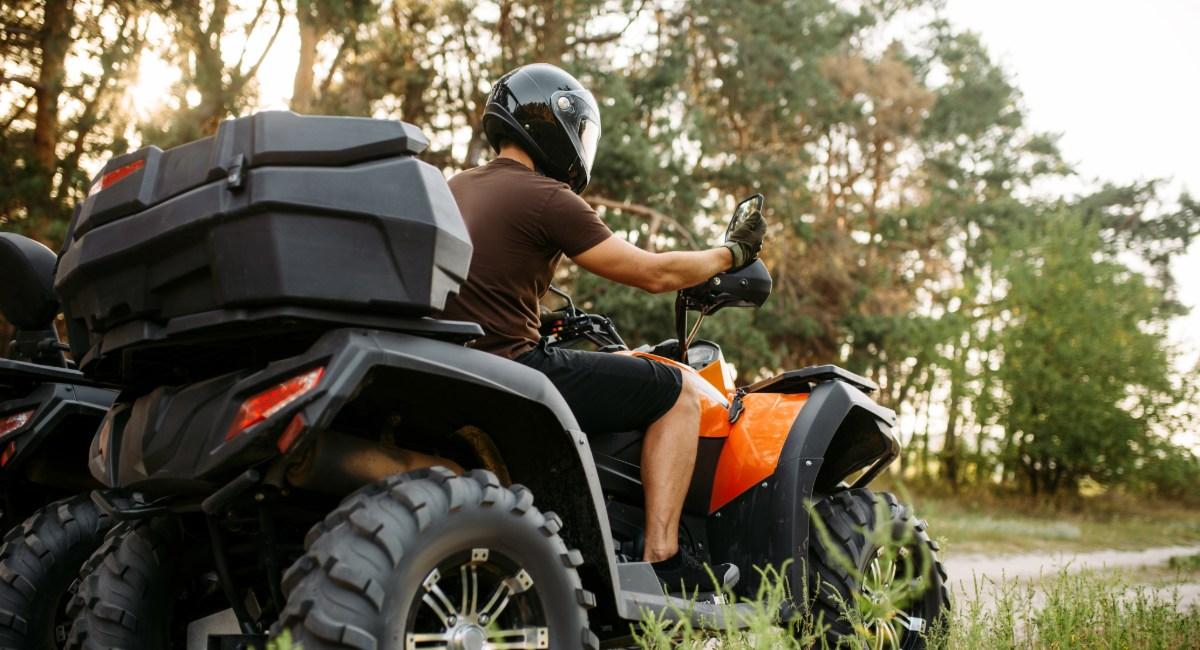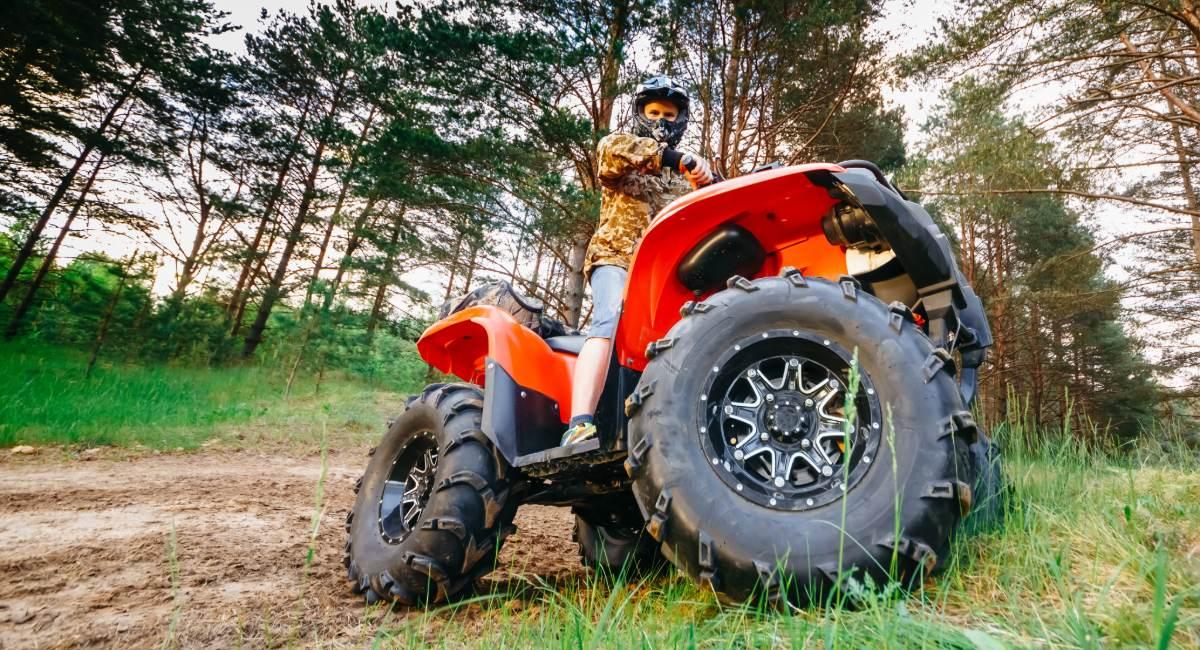Jul 25, 2025
ATV Legal Requirements in the USA: Insurance Minimums by State
ATV Legal Requirements in the USA: Insurance Minimums by State
Complete guide to ATV insurance requirements by state. Learn which states require liability coverage, minimum limits, costs, and where you can ride legally without insurance.
Insurance products
Blog Post
Education

TL;DR: What You Need to Know About ATV Insurance Requirements
Here's the deal: while most states don't require ATV insurance for private property use, the moment you hit public trails or cross into state parks, the rules change fast. States like Pennsylvania, Ohio, and New York require liability coverage for any public land riding. Basic liability coverage costs around $80-$135/month (or $1,000-$1,600 annually) and is an essential step in protecting yourself from potentially devastating financial consequences.
Whether you're required to have insurance or not, carrying coverage protects you from medical bills, property damage claims, and legal fees that can easily exceed $100,000 in a serious accident.
How Does ATV Insurance Work and When Is It Required?
Think of ATV insurance like your riding buddy – it's got your back when things go sideways, and the peace of mind you’ll get is well worth the cost of annual liability coverage.
Understanding ATV insurance requirements can save you from expensive legal troubles and financial devastation. Unlike auto insurance, ATV insurance requirements vary dramatically by state and depend heavily on where and how you ride.
You'll definitely need coverage when you're:
- Exploring state parks and public trails (the good stuff)
- Riding anywhere that isn't your property
- Dealing with a leased or financed ATV
- Crossing public roadways (where permitted)
- Hitting designated recreation areas
Here's what catches people off guard: States like Pennsylvania require liability insurance for all ATVs with general registration, while others only mandate coverage if you’re venturing onto public land.
Important Note: Even if your state doesn't require ATV insurance, homeowner's insurance policies typically exclude ATV-related accidents and won't cover injuries, theft, or damage occurring off your property.
What Are the Minimum ATV Insurance Requirements by State?
Every state writes its own playbook when it comes to ATV insurance, and some are more demanding than others.
States Requiring ATV Insurance for Public Land Use:
Pennsylvania: All ATVs with general registration must have liability insurance coverage issued by an authorized Pennsylvania insurance carrier (no exceptions).
Ohio: State laws only require ATV insurance when riding in state parks and specific public settings, though it's not needed for private property use.
New York: Hit the trails in New York, and you’ll need proof of liability coverage any time you're off private property. Required minimums are $25,000/$50,000 for bodily injury, $50,000/$100,000 for death, and $10,000 for property damage. Make sure your policy meets these limits before venturing onto public land.
States With Their Own Special Rules:
Based on current regulations, the following states require ATV insurance under specific circumstances:
- Alaska: Required if titled and registered as an all-purpose vehicle (APV)
- Arizona & Utah: Required if registered and titled as street-legal
- Idaho: Required for use on public roads open to OHV/ATV use
- Illinois: Required for county and township roadway use for farming
- New Jersey & South Dakota: Required in state parks and on public lands
- New Mexico: Required for authorized paved road use
- Washington & West Virginia: Required if registered as street-legal
- Wyoming: Required on public roads
States with No Current Requirements:
California, Florida, and Wisconsin take a hands-off approach – no specific insurance mandates. But don't get too comfortable. Individual parks and trail systems can still demand proof of coverage before they'll let you through the gate, so make sure to check your local park and municipal rules as they may impose their own requirements on public land.
What Types of ATV Insurance Coverage Can You Get?

Every ATV policy starts with liability protection, and you can build from there depending on how much risk you're comfortable with.
Essential Coverage Types:
Bodily Injury Liability: This is your "someone got hurt and it's my fault" protection. It covers medical bills, lost wages, and legal fees when your adventure takes a wrong turn. Coverage limits are typically structured as an amount per person and a total amount per accident.
Property Damage Liability (Required where mandated): Similar to bodily injury liability, this coverage pays for any damage an ATV driver causes to another person's property, including belongings, homes, or yards, with a single limit per incident.
Collision Coverage: This coverage pays to repair damage to your ATV caused by a collision with another vehicle or if it overturns, often required if you financed or leased your ATV.
Comprehensive Coverage: Everything else that can go wrong – theft, vandalism, that tree that decided to fall on your quad during a storm, is covered under comprehensive coverage.
The Smart Add-Ons:
- Medical Payments: Covers your medical bills regardless of who caused the accident
- Uninsured Motorist: Protects you when the other guy doesn't have insurance (spoiler: it happens more than you'd think)
- Custom Equipment Coverage: Protects aftermarket modifications and accessories
How Much Does ATV Insurance Cost Across Different States?
When it comes to ATV insurance, we're looking at roughly $80-$135 a month for basic liability coverage.
Breaking Down the Numbers:
Liability-Only Coverage:
- $80–$135 per month (most buyers pay $1,000–$1,600 per year)
- Covers damage/injury to others only
Full Coverage Package (Liability + Comprehensive + Collision):
- Average annual cost: $800+ (higher for new/luxury models up to $1,600/year)
- Protects your ATV plus liability
Remember: Rates and minimum requirements can change annually, so always consult your state DMV or a licensed agent before purchasing coverage.
What Drives Your Rate Up (or Down):
Your Ride Matters: Engine size makes a difference – that 1000cc beast costs more to insure than a 400cc trail bike. Newer, fancier ATVs with all the bells and whistles? They're pricier to cover. Insurance companies can also factor in modifications, accessories, and your intended use (recreational vs. work).
ATV-Specific Factors: Clean driving record, completed a safety course, and been riding for years without issues? Insurance companies love that. Live somewhere with low theft rates? Another win.
Discounts Available: Bundling with your home or auto insurance, paying annually instead of monthly, and keeping multiple toys under one policy can save you real money. If you're already protecting other recreational vehicles like RVs or motorcycles, adding ATV coverage to the same policy often unlocks additional discounts.
Where Can You Ride Without ATV Insurance?

Your own land is pretty much the wild west – most states don't care what you do on your property. But venture beyond your fence line, and the rules change fast.
Private Property Riding:
Most states allow uninsured ATV use on:
- Your own private property
- Private property with confirmed owner permission
- Agricultural operations (in most states)
- Designated private recreational areas
The Reality Check:
Even on private property, don't count on your homeowner's insurance to save you. Most policies specifically exclude motorized vehicles, which leaves you personally liable for:
- Medical expenses for injured riders or bystanders
- Property damage to buildings, fences, or equipment
- Replacement costs if your ATV is stolen or destroyed
- Legal defense costs if you're sued
Public Land Requirements:
National forests, state parks, and BLM land – these places often require insurance regardless of what your state says. Park rangers don't care about state-by-state variations; they want to see that insurance card.
What Happens If You Ride Without Required ATV Insurance?
Operating an ATV without insurance exposes you to significant financial risks, making you personally liable for damage or injuries resulting from accidents, including medical expenses, property repair costs, and potential legal fees.
Financial Consequences:
Medical Bills Hit Hard: Emergency room visits start at $1,000 and can easily hit $50,000 for serious injuries. According to the U.S. Consumer Product Safety Commission, ATVs account for over 100,000 emergency room visits annually, with surgery, helicopter rides, and long-term care costs escalating quickly.
Property Damage:
- Other vehicles or ATVs
- Buildings, fences, and structures
- Landscaping and environmental damage
- Personal property of others
Legal Penalties: Even if you win a lawsuit, legal defense can cost $25,000-$100,000. Lose the lawsuit? Now you're looking at fines that can follow you for years.
Real-World Cost Examples:
A serious ATV accident can generate $200,000+ in medical bills alone. Add property damage and legal fees, and you're potentially looking at half a million in costs. Compare that to the $80-$135 a month it will cost you for basic coverage, and the protection is clearly worth the investment.
What Are the Special Requirements for Different Types of ATV Use?

Weekend Warriors and Trail Riders:
Most state parks want proof of insurance before they'll sell you a trail pass. Some require it at the gate, others check during random inspections. Either way, getting turned away from your favorite riding spot because you forgot your insurance card can be frustrating.
Farmers and Ranchers:
Many states cut agricultural users some slack, but don't assume you're covered. If you're using your ATV for anything beyond basic farm work (guided hunting tours or recreational rental), you might need commercial coverage.
Competitive Events and Racing:
Here's where things get tricky: most standard ATV policies specifically exclude racing activities. Planning to compete? You'll need specialized event coverage or a policy that specifically includes competition use.
Teaching the Next Generation:
Kids and ATVs are a whole different conversation. Many states have age restrictions, mandatory safety courses, and specific supervision requirements. The ATV Safety Institute provides comprehensive training resources and courses designed specifically for different age groups. Even if your state doesn't require insurance for youth riders, your potential liability makes coverage a no-brainer.
How Do You Choose the Right ATV Insurance Policy?
Know Your Risk Profile:
High-Adventure Riders Need More: If you're the type who seeks out challenging terrain, rides in groups, or travels to different states regularly, don't skimp on coverage. That $50,000 state minimum might seem adequate until you're facing a $200,000 medical bill.
Occasional Riders Can Start Simple: Weekend warriors who stick to familiar trails might be fine with basic liability coverage, but don't forget about protecting your investment with comprehensive coverage.
Essential Questions for Your Agent:
- Will this policy cover me in other states?
- What happens if my passenger gets injured?
- Are my gear and modifications covered?
- How does this work with my existing health insurance?
- What discounts can I actually qualify for?
Pro Tips for Better Coverage:
Don't just accept state minimums – medical costs have skyrocketed, and minimum coverage often falls short. Consider umbrella policies if you have significant assets to protect. And always read the exclusions; knowing what's not covered prevents ugly surprises later.
For comprehensive protection that covers your adventurous lifestyle, explore insurance options designed specifically for recreational vehicle enthusiasts.
Ready to Hit the Trail with Confidence?
We get it, insurance isn't the fun part of ATV ownership. It’s finding that perfect trail where you can open it up and forget about everyday stress. But here's what we've learned from experience: the riders who plan for the unexpected are the ones who get to keep riding.
Whether your state requires coverage or not, the math is simple. Averaging $80-$135 /month for basic liability coverage, the possibility of an accident largely outweighs the costs of protection. And when you consider how many ATV-related emergency room visits happen every year, the protection becomes even more valuable.
Not sure if your ATV meets your state's insurance requirements? Get a fast, customized quote with Roamly today and ride with confidence.
State minimums are often dangerously low. With medical costs what they are today, consider 100/300/50 as a starting point, not 25/50/25 minimums.
States typically lump them together – if you need ATV insurance, you need UTV insurance. The main difference is usually in how much coverage you want based on the vehicle's value.
No, most companies handle ATVs under motorcycle policies. The coverage options are similar, but the underwriting is different because ATVs face different risks than cars.
Your coverage travels with you, but you need to meet each state's requirements. What's legal in your home state might not cut it elsewhere.
We highly recommend it. Most states don't require it, but your homeowner's insurance probably won't cover ATV accidents either. You're essentially self-insuring, which works great until someone gets seriously hurt.
Roamly Insurance Group, LLC ("Roamly") is a licensed general agent for affiliated and non-affiliated insurance companies. Roamly is licensed as an agency in all states in which products are offered. Roamly license numbers. Availability and qualification for coverage, terms, rates, and discounts may vary by jurisdiction. We do not in any way imply that the materials on the site or products are available in jurisdictions in which we are not licensed to do business or that we are soliciting business in any such jurisdiction. Coverage under your insurance policy is subject to the terms and conditions of that policy and is ultimately the decision of the buyer.
Policies provided by Roamly are underwritten by Spinnaker Insurance Company, Progressive Insurance Company, Safeco Insurance Company, Foremost Insurance Company, National General Insurance, Mobilitas Insurance Company, and others.
Connect
© 2025 Roamly All rights reserved.
